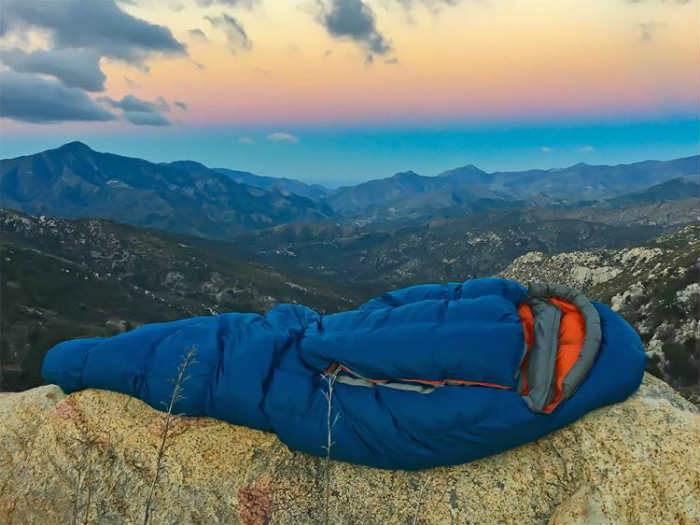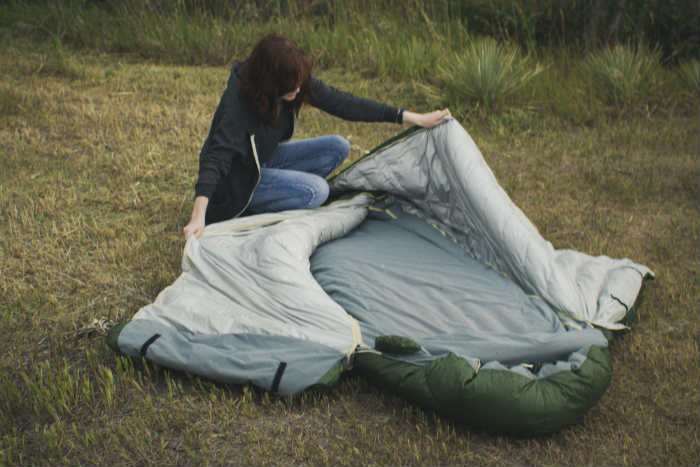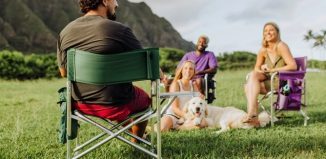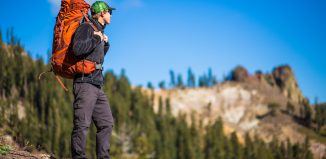When preparing for a camping trip you need to make sure you have all the essentials to make your experience as comfortable as you can. When faced with the conditions outside and away from the comforts of the city, it’s better to be overprepared than underprepared.
That said, a quality sleeping bag is something we can’t imagine a camping trip without. If you choose properly, you can get a sleeping bag as comfortable as your own bed. However, if you choose poorly, you’ll be left with a bad experience. Based on the filling material, they can be down-filled or synthetic. Here we will focus more on the down-filled sleeping bag, being a favourite among campers worldwide, and for good reasons.
What Is a Down Sleeping Bag?
Down is a natural material that provides a great warmth-to-weight ratio, meaning that it’s very lightweight and it provides high insulation. Two types of down being used in sleeping bags are goose and duck down, the first being more popular.
Why Is a Down Sleeping Bag Better Than a Synthetic One?
Down sleeping bags outperform synthetic sleeping bags in many ways. They are lighter, so they are easier to carry when backpacking. Besides being incredibly lightweight, down sleeping bags are highly compressible so they take up very little space too, allowing you to carry more gear. And best of all, they provide more warmth due to their superior insulation structure.
While maintenance plays a big role in the durability of both types, down sleeping bags usually last longer than synthetic ones. You only need to maintain them properly by washing with a special detergent and at a low spin.
Doing well in wet conditions may seem like a point on the side of synthetic sleeping bags, but there are many water repellent down sleeping bags that perform just as well.

How to Choose the Right One?
Construction
The way that a down sleeping bag’s insulation works is with tiny clusters found underneath the feathers that trap air, which warms up from our body temperature. In moist conditions these clusters clump together and lose their insulation value. However, certain models go through hydrophobic treatments and perform well in moderate moisture conditions.
To choose a bag with higher insulation, look for numbers such as “90/10” or “85/15” on the hangtag, which indicate the ratio between clusters and feathers.
Fill Power
The fill power is another criterion for choosing a down sleeping bag. It can range anywhere from 550 to 1000 fill power and it indicates how much an ounce of down can loft, or how much air it can trap. The difference between the values tells you how light the bag will be, with higher values indicating less weight. If you’re an ultralight camper, you should opt for sleeping bags above 750 FP.
Type of Down
There isn’t a big difference between duck and goose down. Duck down sleeping bags are usually better for lower temperatures, but they don’t exceed 650 FP, while goose down sleeping bags go up to 1000 FP. So, if you don’t mind a little extra weight and you’re camping in extremely low temperatures, a duck down sleeping bag is what you need.
Features
Another important factor when choosing a down sleeping bag are the types of baffles used and their placement. Baffles are used to control where the down is placed and to prevent cold spots. Vertical baffles in the torso area and horizontal baffles in the lower part provide ideal distribution of the down. There are different types of baffles for different temperatures, such as box baffles, overlapping baffles and others. Side block baffles ensure you that the down doesn’t move from the front to the back of the bag. This keeps you warm throughout the night, no matter how much you roll around.
Certifications
If you’re concerned as to whether or not the product contains quality down and whether it’s ethically sourced, pay attention to specific certifications. To make sure you’re buying a product with the best quality down, look for sleeping bags tested by the IDFL Laboratory and Institute, while to ensure the humane treatment of waterfowl – look for the RDS (Responsible Down Standard) certification.

Shape
There is a difference in the designs between men’s and women’s sleeping bags since women’s are usually wider at the hips.
Referring to the overall shape of the sleeping bag we have:
- Rectangular;
- Semi-rectangular;
- Mummy;
- Double wide.
The difference being that the rectangular bags are more comfortable and have more space, while taking longer to warm up, while the mummies have very little space, but provide instant warmth. The double-wide sleeping bags are for sleeping in pairs and don’t provide additional benefits.
Sleeping Bags for Different Weather Temperatures
When it comes to the weather conditions a sleeping bag can work in, there are 3 different types to choose from regardless whether you go for a down or a synthetic sleeping bag.
- Summer (above 1.6⁰C);
- 3 Season (-12⁰C to 1.6⁰C);
- Winter (below -12⁰C).
Most sleeping bags have EN temperature ratings such as Comfort Rating (temperature suitable for cold sleepers) and Lower Limit Rating (temperature suitable for warm sleepers).
Bottom Line
From durability to their excellent warmth-to-weight ratio, down sleeping bags are a great investment that will make you comfortable and protected providing you with an unforgettable camping experience. They are pricier than synthetic sleeping bags, however, we can confidently say that they’re worth every cent. If price is your concern, you can find retailers that offer a down sleeping bag sale where you’re offered the same quality at discount prices.
When choosing your sleeping bag, don’t forget to look for the mentioned certificates to make sure it’s ethically sourced and contains quality down. Also, make sure it’s the right size and shape, and it’s fit for the weather conditions.
For your first camping trip you might want to choose a nearby location, and try to arrive during the daytime to be able to easily set up your tent. On your trip, it’s important to have fun, enjoy nature and, of course, responsibly dispose of your waste.












